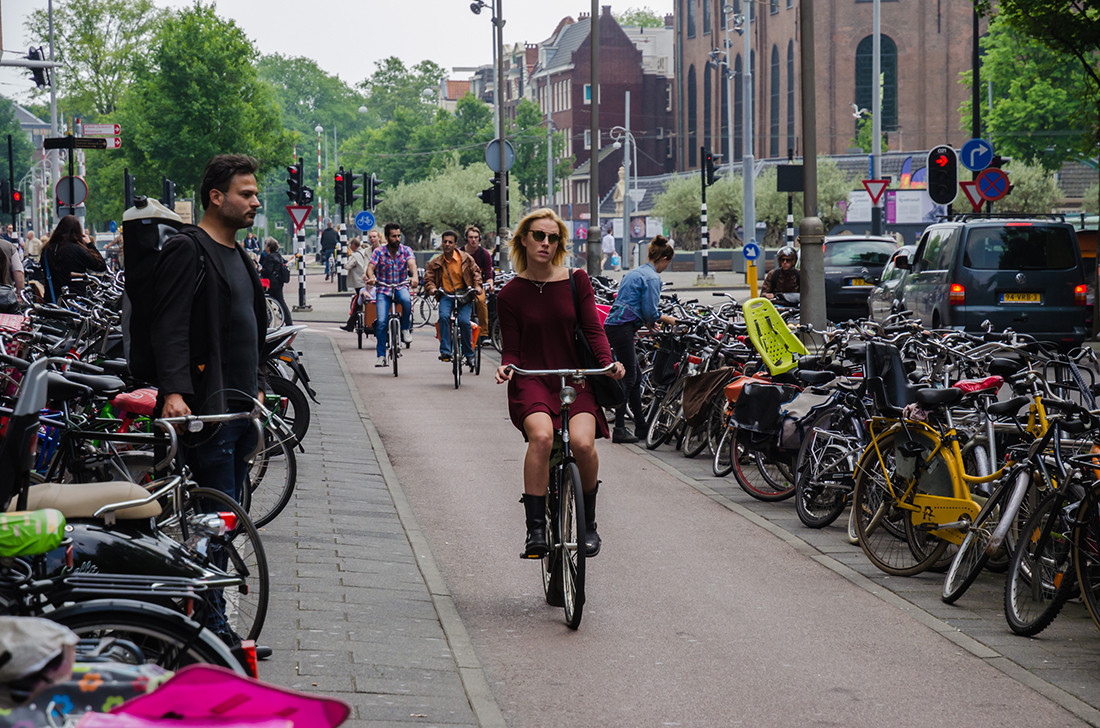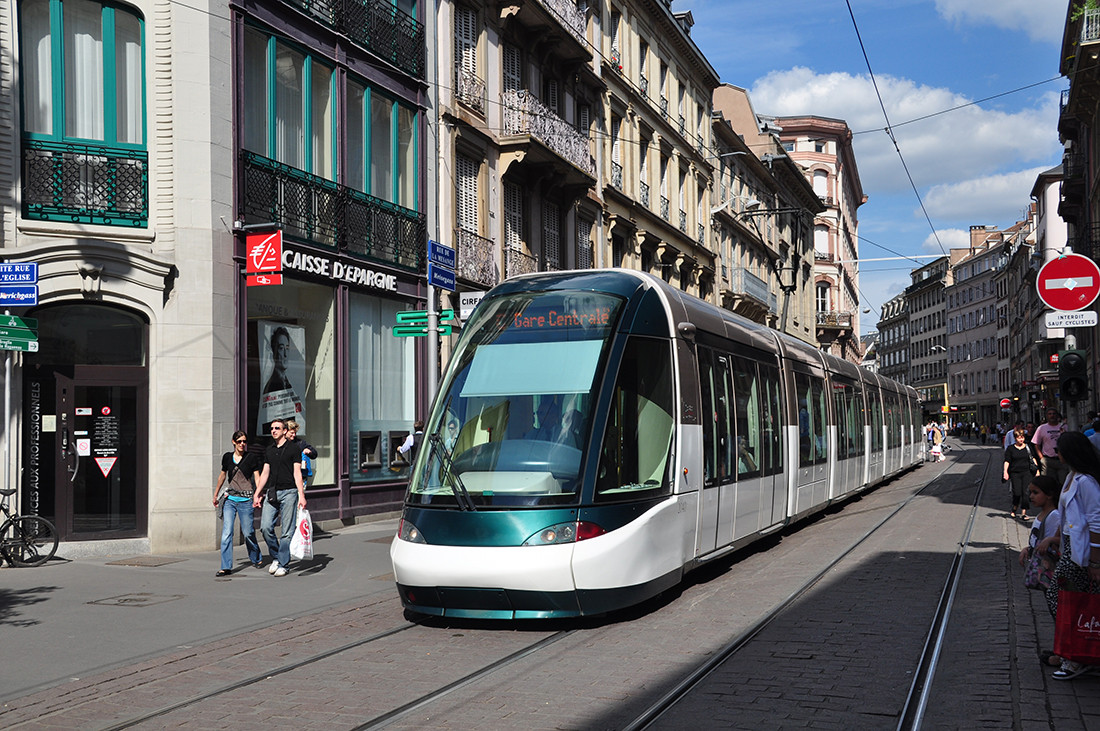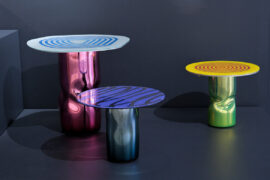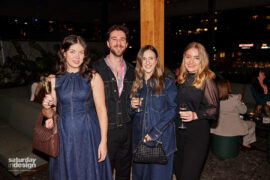Ageing Citizens and rapid population growth is changing the way we navigate our city centres. While it throws up plenty of challenges, Paul Priestman of PriestmanGoode only sees opportunity.

January 17th, 2020
Today, more than half of the world’s population lives in cities, and it is estimated that by 2050, that number will grow to 6.7 billion – or about 68% of the global population – and, by that time, the number of people aged 80 or over is projected to triple. So, as people live longer, cities across the world will not only be faced with general growth but the specific challenges of an ageing population, particularly when it comes to the way designers and urban planners think about transport systems.
“As designers, instead of thinking of these new requirements as limiting the creative process, embrace them and see what benefit it can bring to the whole community,” suggests Paul Priestman. In these near-future “silver cities”, as they are often dubbed, the boundary between public and private transport will dissolve, cars will disappear, and new kinds of adaptable infrastructure will emerge, suggests Priestman – and all of this opens up opportunities to create new kinds of transport systems that not only support an ageing and growing population and encourage healthier lifestyles, but also contribute to the character of our cities.

The link between keeping active and healthier for longer through mobility is a particularly interesting area. Recently, we’ve been working on “Walk Lines”, which are like tram lines but without trams. The “station stops” might be cafes, and there are walkways, cycleways, and scooterways. These aren’t only for recreation, but for navigating the city.
When you can encourage people to walk longer distances to a transport stop, you don’t need to build as many stations and the whole system becomes more efficient as buses and trains don’t have to stop as often. Replacing roads with these kinds of walking and cycling highways creates a lot of benefits – a more active lifestyle, a healthier population, and a more efficient public transport system.
What’s the rush? Commuting as part of the work day
We’re designing high speed trains, planes and spaceships to get people from one place to another as fast as possible – but we are also interested in what happens when the public transport system becomes more than a way to commute. It opens up the question: What’s the rush?
In California, the work day is now counted from the moment people leave their home to the moment they return, so the commute is now part of the working day. In the same way people might choose to work somewhere like a cafe, because it’s more human, a public transport system could become a part of the workday. It’s about creating a space for community, where people want to be together. Transport almost becomes a byproduct.
If you look forward 10 to 20 years, I think the centres of most cities will be car free or moving in that direction. If you’re going to be taking out a major part of the existing infrastructure, what does that mean? I do think trains will remain a part of the infrastructure of cities – there aren’t many vehicles that can transport so many people so quickly.
I also believe we should embrace walking, cycling, and emerging technologies, like drones. Our “Dragonfly” project for a drone delivery system was inspired by the congestion in cities caused by delivery vans. We started to think about how we could deliver to different floors in buildings, and how we could re-utilise the rivers and harbours, around which many cities are built, as the distribution centres. We imagined these little leaves drifting off and delivering to people’s houses and workplaces, then perching on a windowsill and waiting for the next job.

Public transport and vehicles will increasingly become the brand of a city, in the same way that Hong Kong has trams and Copenhagen has bicycles. These transport systems become part of the culture and national pride – many of the trains we’ve designed around the world are on stamps or even bottles of milk. That’s not something that happens often in design. So it’s important that the vehicles we design create a character for the city, just like the buildings or the food.
It’s not a tourist’s perspective when we design this character, it’s a modern take on the city. When we designed the New Tube for London, we focused on materials that would age well, like the bronze steppages that are kept shiny through people’s use and identify the edge of the step.
In cities where overcrowding is a problem, public transport systems need to allow for higher capacity. With the New Tube for London, for example, part of the brief was to create 30% more capacity. You have to use design and technology to make what already exists work better and to encourage people to act more efficiently intuitively – like putting in more doors so that people board faster. I describe it as getting the grit out of the system.
We have also explored the idea of seats that transform. Our Horizon and Island Bay project was funded by the Department of Transport in the UK to look at that particular problem and the seats adapt to different use during rush hour and off-peak times.
As it becomes increasingly necessary to take the pressure off public transport systems, cities will embrace a crossover between public and private transport. Main infrastructure hubs will be repurposed to encourage people to use other forms of transport – so, when you come out of a station, there will be electric bikes and scooters instead of taxis and a carpark. It’s to the benefit of everyone. Think about a Spanish city in the evening where people go for a stroll to enjoy the evening – that’s the thing to bring back.

We worked on the transport masterplan for a development for a dementia community some years ago. It was the opposite to a traditional corporate identity for a public transport system, where everything has a similarity in design. Each bus stop had to look very different so that it was more memorable.
For people with dementia, that’s something that is necessary, but does that also make it more fun and more interesting for everyone else?
Isolation and loneliness are big challenges for an ageing population and designing transport solutions that create community is vital. Public-private transport can play a role in bringing a community feel back to transport.
Take “transport on demand” – instead of having a but that travels a set route, sometimes empty, users subscribe to an app and designate a pick up and drop off point. They then wait for a small vehicle, often with a group of others from the local community, to pick them up. This idea could be taken even further by making the vehicle part of the community – it could become the sports bus, or the coffee bus.

The biggest challenge when designing trains is getting people on and off more quickly so that the train doesn’t stay stationary for too long. As the population ages and more people perhaps can’t move so quickly, will that impact on our public transport systems? Considerations, such as having level access from platform to train is going to become increasingly important, as is using design to encourage people to intuitively act more efficiently.
We’ve been working on the new Hong Kong metros and the MTR is exploring art for wayfinding – for example, people will tend to follow the direction of art that has motion in it. It removes the need to clutter a space with a bombardment of warning signs and allows people to move in a very calm and intuitive way.
INDESIGN is on instagram
Follow @indesignlive
A searchable and comprehensive guide for specifying leading products and their suppliers
Keep up to date with the latest and greatest from our industry BFF's!

Welcomed to the Australian design scene in 2024, Kokuyo is set to redefine collaboration, bringing its unique blend of colour and function to individuals and corporations, designed to be used Any Way!

The undeniable thread connecting Herman Miller and Knoll’s design legacies across the decades now finds its profound physical embodiment at MillerKnoll’s new Design Yard Archives.

A longstanding partnership turns a historic city into a hub for emerging talent

For Aidan Mawhinney, the secret ingredient to Living Edge’s success “comes down to people, product and place.” As the brand celebrates a significant 25-year milestone, it’s that commitment to authentic, sustainable design – and the people behind it all – that continues to anchor its legacy.

Designed by artist Abdul Abdullah, the porcelain façade for this Melbourne train station has been executed with custom-printed Fiandre DYS panels.

Cox Architecture, Woods Bagot and Zaha Hadid Architects are all part of the newly completed Western Sydney International (Nancy-Bird Walton) Airport (WSI) terminal.
The internet never sleeps! Here's the stuff you might have missed

Despite its long and rich history, signwriting is a profession in decline. Will Lynes’ new show, Oily Water at Canberra Glassworks, aims to showcase the techniques of the trade to highlight its potential in design.

On 6th September 2025, Saturday Indesign went out with a bang at The Albion Rooftop in Melbourne. Sponsored by ABI Interiors, Woodcut and Signorino, the Afterparty was the perfect finale to a day of design, connection and creativity.

Lighting becomes storytelling in the hands of Bocci and Moooi – brands championed by Space Furniture.

The Arup Workplace in Perth/Boorloo, designed by Hames Sharley with Arup and Peter Farmer Designs, has been awarded The Work Space at the INDE.Awards 2025. Recognised for its regenerative design, cultural authenticity, and commitment to sustainability, the project sets a new benchmark for workplace architecture in the Indo–Pacific region.